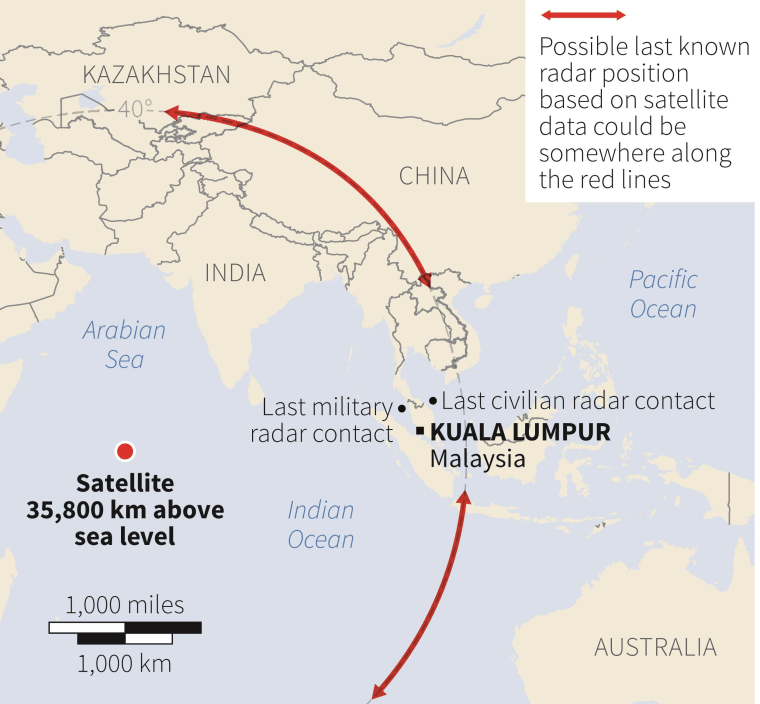The first turn of missing Malaysia Airlines Flight 370 was made using the jet’s computer system rather than its manual controls, authorities confirmed to NBC News - reinforcing the theory that the plane was deliberately diverted.
The course of the Beijing-bound flight was changed by entering navigational instructions into the Flight Management System (FMS), the cockpit computer that directs the plane along a flight plan chosen by pilots.
It is not clear when the instruction to turn west was entered into the FMS, but its use suggests the change of course was carried out by somebody in the cockpit who was knowledgeable about airplane systems. The FMS is controlled by a display panel between the two pilots.
Information from the FMS is among the data transmitted by the Aircraft Communications Addressing and Reporting System (ACARS) which sends information back to the airline’s maintenance base.

According to a report in the New York Times, investigators believe that a navigational waypoint was added to the planned route.
“Pilots do that in the ordinary course of flying if air traffic controllers tell them to take a different route, to avoid weather or traffic. But in this case, the waypoint was far off the path to Beijing,” the newspaper reported.
At least six theories are under investigation after the Boeing 777 vanished on March 8 — but all remain unsubstantiated:
- The plane landed somewhere, for reasons unknown, and isn't able to communicate with the outside world. Experts say that's technically possible but almost unimaginable.
- A "sudden catastrophic event," like mechanical failure or decompression, as when a plane carrying golfer Payne Stewart crashed in 1999.
- Hijacking or terrorism: No credible group is known to have claimed responsibility for the plane's disappearance.
- Crew sabotage — including pilot suicide, for example.
- Pilot error. This is considered unlikely, as both pilots were very experienced.
- "Outside human intervention," such as bad weather or a meteor strike.